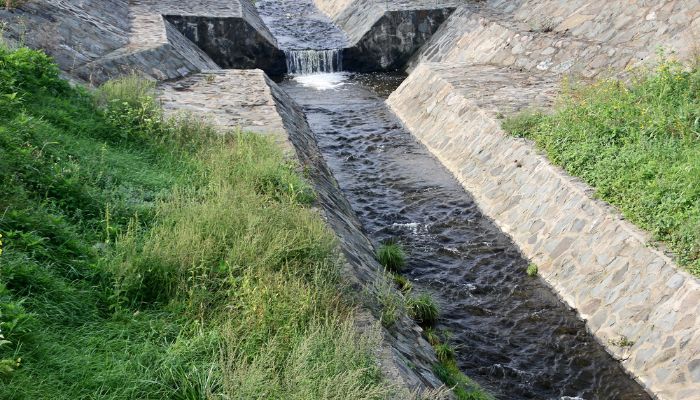Why Florida Restaurants Can’t Afford to Ignore Drain Issues
For restaurant owners in Florida, maintaining a clean, safe, and efficient kitchen goes beyond spotless counters and delicious food. The drainage system—often out of sight and out of mind—plays a vital role in ensuring smooth operations. Unfortunately, drain issues can quickly escalate into major health violations, unpleasant odors, and even business shutdowns. Ignoring slow drains or recurring clogs might seem harmless at first, but in a humid state like Florida, these problems can spread fast. Let’s explore why staying proactive with your commercial drainage system isn’t optional—it’s essential for your restaurant’s success. The High Stakes of Poor Drain Maintenance Florida’s climate and food service demands make restaurant drains especially vulnerable to buildup from grease, food waste, and debris. Over time, this accumulation can: Cause foul odors that drive away customers Lead to pest infestations in kitchens and food prep areas Slow down daily kitchen operations Trigger costly plumbing repairs or even emergency closures When water can’t drain properly, it doesn’t just create inconvenience—it compromises your health standards and reputation. Why Drain Issues Are Common in Florida Restaurants Restaurants in coastal areas like Jacksonville, Tampa, and Miami face unique challenges. Florida’s moisture, heat, and high grease output from commercial kitchens make perfect conditions for drain blockages. Grease traps often overflow, and food debris clogs drain lines faster than expected. The combination of organic buildup and bacteria creates strong odors and unsanitary environments—problems that inspectors never overlook. This is where scheduling a commercial drain cleaning service in Jacksonville becomes a preventive, not reactive, measure. Regular cleaning keeps your systems flowing smoothly and avoids major disruptions during busy hours. Warning Signs You’re Headed for a Drain Disaster Restaurant owners and managers should watch for these early warning signs before a small problem turns into an expensive one: Slow-draining sinks or floor drains – Indicates buildup deep inside pipes Persistent bad smells – Usually caused by grease or organic decay Gurgling noises – Air trapped in the line from partial blockages Backflow or overflow incidents – A sign your system is under pressure These are red flags that your commercial drain cleaner should address immediately. Waiting too long often means full system blockages that disrupt service and hurt your bottom line. The Health and Safety Risks of Ignoring Drain Problems Health inspectors in Florida take sanitation seriously. Clogged or unmaintained drains can lead to: Health code violations and fines Mold and bacterial growth Slip-and-fall hazards from standing water Contaminated kitchen environments Restaurants are legally responsible for maintaining sanitary working conditions. A single violation report can spread fast online, damaging your brand reputation and customer trust. By contrast, regular commercial drainage maintenance ensures compliance, keeps your employees safe, and protects your kitchen from downtime. Financial Consequences of Drain Neglect Drain problems are more than an inconvenience—they’re a financial risk. When left unchecked, a simple clog can evolve into a complete shutdown. The average restaurant can lose hundreds or even thousands of dollars per day from plumbing-related interruptions. Moreover, water damage from leaks or backflow can lead to expensive property repairs, mold remediation, and insurance claims. Preventive care costs far less than emergency response. For a detailed breakdown of how to safeguard your property, check out these top commercial drainage solutions on WeatherTek FL. How Regular Drain Cleaning Improves Restaurant Efficiency Restaurants that implement scheduled drain cleaning programs notice improvements beyond avoiding clogs. Benefits include: Faster water drainage during rush hours Fewer plumbing emergencies Improved kitchen hygiene and odor control Longer lifespan of pipes and plumbing fixtures Better compliance with Florida’s sanitation codes Routine service from a trusted commercial drain cleaner ensures your staff can focus on food quality, not plumbing issues. Best Practices to Prevent Restaurant Drain Issues Preventive maintenance is the secret weapon for Florida restaurants. Here’s how to stay ahead of drain problems: Install and maintain grease traps – Clean them regularly to prevent overflow. Train kitchen staff – Avoid dumping grease, oils, or solids into sinks. Schedule quarterly inspections – Hire professionals to assess hidden blockages. Use enzyme-based cleaners – Gentle on pipes and effective for daily upkeep. Document maintenance activities – Helps with health inspections and compliance. Consistent upkeep can eliminate 80% of common drainage issues before they start. Choosing the Right Drain Service Partner in Florida Not all drain cleaning services are the same. When selecting a provider, look for: Local expertise – Familiarity with Florida’s drainage challenges 24/7 emergency response – Critical for restaurant operations Eco-friendly cleaning methods – Protects pipes and the environment Transparent pricing – No hidden fees or surprise charges Working with reliable drainage professionals gives peace of mind and ensures compliance with restaurant health standards. Don’t Wait for a Shutdown in Restaurant Ignoring drain issues can turn a thriving restaurant into a health hazard overnight. Regular cleaning and inspections protect your investment, your employees, and your customers. For Florida restaurant owners, maintaining a healthy commercial drainage system isn’t just about plumbing—it’s about business continuity, hygiene, and reputation. Conclusion: Stay Proactive, Stay Open Florida restaurants can’t afford to ignore drain maintenance. Between the state’s humidity, high kitchen output, and strict health regulations, small drainage problems can snowball fast. Investing in routine cleaning and professional maintenance not only saves money but also ensures that your restaurant stays open, clean, and trusted by customers. Take a proactive step today—schedule a professional inspection before the next rush hour hits. Your drains, your staff, and your reputation will thank you.


